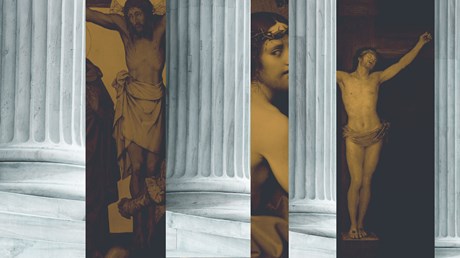They were developed in their historical contexts. What does that mean for today?

The story of Easter, all Christians agree, is the story of our salvation. “By this gospel you are saved,” wrote Paul, “that Christ died for our sins according to the Scriptures, that he was buried, that he was raised on the third day” (1 Cor. 15:2–4). It was for “us and for our salvation,” says the Nicene Creed, that Jesus took on flesh, died, and rose as “Lord and Messiah” (Acts 2:36).
But how did our salvation take place, exactly? The theories of Christ’s atonement tell stories of Easter’s inner workings. And the three most popular models throughout church history—Christus Victor, satisfaction theory, and penal substitution—are also remarkably political. They were shaped by the governmental contexts in which they arose.
I’ve come to love studying atonement theories, because it has clarified and enriched my understanding of God’s character and because learning about those political contexts has shed light on where our society is moving now.
My first exposure to Christus Victor was The Lion, the Witch, and the Wardrobe, but the theory is dominant among early theologians like Origen, Athanasius, and Gregory of Nyssa. They speak of Jesus redeeming us from oppressive powers—sin, death, the Devil—to whom we’d bound ourselves by our own treachery. Christ “disarmed” those powers and triumphed over them on the cross (Col. 2:13–15). God became incarnate, as Irenaeus wrote, that “He might kill sin, deprive death of its power, and vivify man.”
That made sense in the ancient Greco-Roman world, where conquest was familiar and a redemptor could buy the freedom of someone enslaved or taken prisoner of war. ...
from Christianity Today Magazine
Umn ministry


.gif)

.gif)
.gif)
